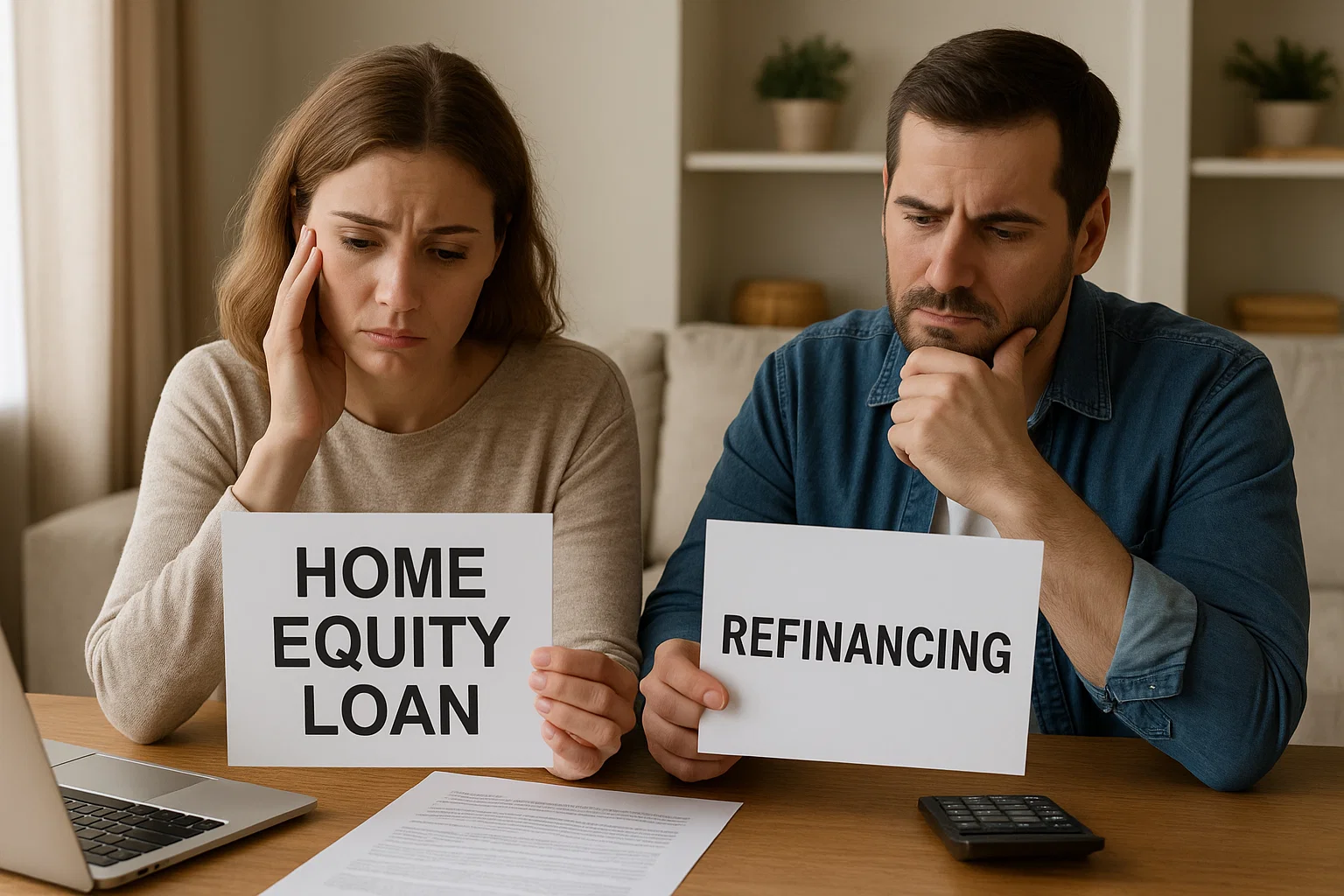.png)
Homeownership represents one of life's significant financial milestones. The standard pathway for most borrowers is a thirty-year mortgage, which offers manageable monthly payments and allows equity to build gradually over time. However, if a homeowner's financial situation has improved since the original purchase, that extended timeline may no longer be in their best interest.
Refinancing to a shorter loan term—typically fifteen or twenty years—provides a strategic chance to dramatically accelerate mortgage payoff, build equity faster, and realize substantial savings on total interest paid. Evaluating whether higher monthly payments align with your financial capacity is crucial, as this approach can transform a multi-decade obligation into a medium-term commitment, freeing your financial future sooner.
Understanding Short-Term Refinancing
Short-term refinancing involves replacing the current mortgage with a new loan that has a significantly reduced repayment period. Homeowners most commonly refinance from thirty-year mortgages to fifteen-year terms, although twenty and twenty-five-year options are available for those seeking solutions in the middle ground.
The fundamental trade-off is clear: shorter terms demand higher monthly payments because the same principal amount is compressed into fewer years. Yet, this increased monthly requirement provides powerful financial benefits that compound dramatically over time.
- Lower Interest Rates: Shorter-term mortgages usually carry lower interest rates than longer-term loans. Lenders offer these reduced rates because they face less risk, as the accelerated repayment timeline reduces the opportunity for market disruptions, economic downturns, or borrower financial instability to impact loan performance. This rate differential alone results in substantial lifetime savings.
- Reduced Interest Accumulation: The compressed timeline ensures interest accumulates for significantly fewer years. Even if the interest rates were identical, a fifteen-year mortgage would incur dramatically less total interest than a thirty-year loan simply because the annual interest charges disappear sooner. The combination of lower rates and shorter duration generates exponential savings.
- Faster Equity Building: With higher monthly payments directed towards principal reduction rather than interest, your ownership stake increases rapidly. This accelerated equity building offers financial flexibility for future needs, such as providing emergency resources, supporting retirement, or funding education.
The process for term reduction refinancing mirrors standard refinancing: one must evaluate their financial capacity, research rates from various lenders, submit updated documentation, arrange a property appraisal, and close on the new loan. Closing costs typically range from 2–4% of the loan amount.
Essential Questions Before Shortening Your Term

Before proceeding, certain questions must be addressed to ensure the strategy is sound.
- Can your budget consistently accommodate higher monthly payments? Short-term refinancing is effective only if the increased obligations can be managed comfortably without sacrificing other financial priorities.
- How much time remains on your current mortgage? Refinancing is most advantageous when there is substantial time remaining; if the loan is nearly paid, the closing costs may not be justified.
- What is the interest rate differential? Comparing current short-term rates against your existing rate determines if the shorter term will generate sufficient savings to warrant the transition.
- How long do you intend to remain in your home? The maximum value from shorter-term refinancing is realized when you stay long enough to benefit from the accrued equity and interest savings.
When Shorter-Term Refinancing Creates Value
The most compelling scenario for term reduction arises when income has increased substantially since the original mortgage, giving the household the financial capacity to absorb higher payments without compromising savings goals or lifestyle. Opportunities to redirect cash flow toward accelerated payoff are often created by factors like career advancement, salary increases, the elimination of debts, or reduced living expenses (e.g., dual-income households).
For instance, families who needed thirty-year terms for affordability during early career years may easily manage higher payments a decade later due to promotions or additional household income. Refinancing effectively captures this improved financial position and converts higher income into faster wealth building.
Approaching retirement is another strong motivation. Homeowners in their forties or fifties frequently aim to eliminate mortgage obligations before retirement income replaces salary. Refinancing a remaining twenty-five-year term down to fifteen years ensures mortgage-free living during retirement when income is typically lower.
Life stage transitions also influence this decision. Empty nesters may redirect tuition savings toward accelerated mortgage payoff, while those receiving inheritances or financial windfalls may use refinancing to structure higher, now affordable, payments, prioritizing rapid equity building. Furthermore, some homeowners prioritize debt-free living over optimizing current cash flow, motivated by the psychological freedom of ending the obligation in fifteen years instead of thirty. This mindset views the mortgage as temporary.
Calculating Your Term Reduction Benefits
Real numbers clearly demonstrate the dramatic advantages of moving to shorter terms.
Consider Rajesh from Delhi, who has a ₹50 lakh mortgage with twenty-five years left at a 9% interest rate, leading to a current monthly payment of approximately ₹42,000.
If Rajesh refinances to a fifteen-year term at 8.5% (shorter terms typically offer 0.5–1% lower rates), his new payment rises to about ₹49,000—an increase of ₹7,000 monthly (or ₹84,000 annually). While the monthly increase is notable, the long-term impact is profound.
- Interest Savings: Under the original 25-year term at 9%, Rajesh would pay approximately ₹76 lakh in total interest. By refinancing to 15 years at 8.5%, his total interest drops to roughly ₹38 lakh. This represents a saving of ₹38 lakh in interest charges while also eliminating ten years of payments.
- Lifestyle Impact: Rajesh becomes mortgage-free at age fifty-eight rather than sixty-eight, providing an entire decade of retirement without housing debt. That ten-year head start allows him to redirect former mortgage payments toward investments, travel, supporting adult children, or simply enjoying financial freedom earlier.
- Cost Justification: Even factoring in estimated refinancing costs of ₹1.5 lakh, the ₹38 lakh in lifetime interest savings and ten years of eliminated payments overwhelmingly justify the transition. The break-even point is reached within months, as the lower interest rate's monthly savings offset the closing costs quickly.
A middle-ground option, such as refinancing from thirty years remaining to twenty years, also delivers substantial interest savings and accelerated payoff compared to the original plan, with only a moderate increase in monthly payments. This compromise suits households that want benefits without maximum payment increases.
Critical Considerations and Strategy

Before committing to higher payments, several critical factors must be evaluated.
- Opportunity Costs: Carefully assess whether the higher monthly payment amounts could generate better returns if invested elsewhere. Compare potential investment returns against the savings achieved through reduced mortgage interest.
- Emergency Reserves: Increased mortgage payments must not compromise financial security by depleting savings or preventing the building of adequate emergency funds. Financial security requires both.
- Prepayment vs. Refinancing: Evaluate whether simply making extra principal payments on the existing loan could provide similar benefits without incurring refinancing costs and the commitment to a new loan.
- Income Stability: Committing to higher fixed payments requires confidence in sustained income; uncertain employment situations might favor maintaining lower obligations.
- Penalties and Costs: Review closing costs and any prepayment penalties to ensure these expenses don't negate the expected interest savings, especially if significant penalties exist on the current loan.
Building Your Strategy
Term reduction refinancing is not about impulsively accepting higher payments—it is about strategically leveraging improved financial capacity to accelerate wealth building and achieve mortgage-free living substantially sooner.
- Assess Your Budget: Begin by honestly determining if your household budget can comfortably absorb the higher payments while maintaining savings goals, retirement contributions, emergency reserves, and quality of life.
- Calculate Scenarios: Use online mortgage calculators to input your current loan balance, remaining term, and interest rate. Then model fifteen, twenty, and twenty-five-year refinancing options to see precise lifetime interest savings and monthly payment changes. These concrete numbers clarify whether the trade-offs align with your financial priorities and capabilities.
- Partner with Experts: Work with lenders experienced in term reduction who can explain rate differences across various terms, calculate break-even timelines, and help determine if a shorter term genuinely serves your situation. Seek institutions that disclose all costs upfront and support informed decision-making rather than pressuring specific products.
When executed thoughtfully and with discipline—calculating payment increases realistically, ensuring adequate emergency reserves remain intact, and confirming career stability supports sustained higher obligations—shorter-term refinancing transforms the mortgage from a thirty-year anchor into a medium-term commitment that liberates future financial capacity a decade or more sooner.
Take Control of Your Timeline
In the current financial environment, reducing debt obligations and building equity quickly support long-term security, making shorter-term refinancing a powerful accelerator toward being mortgage-free. Evaluate your improved financial capacity, research available shorter-term rates, and explore if accelerated payoff aligns with your household’s priorities around wealth building and debt freedom. The power to eliminate a decade or more of mortgage payments exists—it requires the initiative to investigate whether your circumstances favor making that accelerating move toward full homeownership.

Alex Chen

Alex Chen













Get in touch with a loan officer
Our dedicated loan officers are here to guide you through every step of the home buying process, ensuring you find the perfect mortgage solution tailored to your needs.
Options
Exercising Options
Selling
Quarterly estimates
Loans
New home

随时了解有见地的文章和指南。
每周一,你将获得一篇文章或指南,这将帮助你在工作和个人生活中更具活力、更专注和更有成效。





.png)
.png)
.png)
.png)
.png)
.png)
.png)
.png)
.png)
.png)
.png)
.png)
.png)
.png)
.png)
.png)
.png)
.png)
.png)
.png)
.png)
.png)